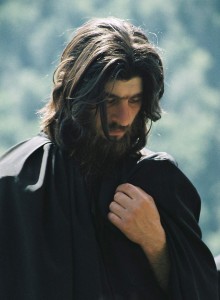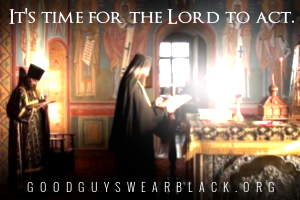Symbolism and Neuroplasticity: the work of the mind in the brain.
by Archbishop Lazar Puhalo
 This essay is not being written for every level of reader. It is intended to respond to a stream of rationalism which is drawing a kind of Episcopalization or Anglican style “liturgical reform” movement within the Orthodox Church. There are a many of such rationalists who would lead us on the same path that the Anglican-Episcopalian Churches have gone upon. Reductionism and minimalism in the divine services and the liturgical cycle have had a deeply negative effect everywhere they have been instituted. It is the connection between the Orthodox liturgical cycle and our liturgical art (iconography) and the structuring of the brain that we wish to examine. First, let us explain, as simply as possible, what is meant by neuroplasticity.
This essay is not being written for every level of reader. It is intended to respond to a stream of rationalism which is drawing a kind of Episcopalization or Anglican style “liturgical reform” movement within the Orthodox Church. There are a many of such rationalists who would lead us on the same path that the Anglican-Episcopalian Churches have gone upon. Reductionism and minimalism in the divine services and the liturgical cycle have had a deeply negative effect everywhere they have been instituted. It is the connection between the Orthodox liturgical cycle and our liturgical art (iconography) and the structuring of the brain that we wish to examine. First, let us explain, as simply as possible, what is meant by neuroplasticity.
The Mind Can Reshape the Brain
This may be a startling statement to some people. For those who think that the mind is only a function of brain chemistry, it will appear antithetical. Nevertheless, the ability of the mind to rewire and restructure the brain is precisely what we are going to discuss. We are particularly interested in examining this process in connection with the liturgical cycle and the symbolic aspects of liturgy and iconography.
There are many, sometimes extreme examples, of the ability of the mind to retrain and restructure the brain. It takes a lot of work and dedicated focus. One of the primary sources of our knowledge of this process is stroke victims or persons with other brain injuries. If one part of the brain is injured, another section can be trained to take over its functions. The Arrowsmith School in Toronto specializes in teaching people to “rewire” their brains in order to overcome learning disabilities.
Repeated Actions and Words
It is through repetition of actions, phrases and words, particularly in fixed symbolic contexts, that this restructuring takes place. It is known that neurons and synapses in the brain can be strengthened by repetition, by repeated engagement of the neurons and neuro-communication. Neuro-connections can also atrophy from lack of engagement or use. Repeated acts and phrases can also have an epigenetic effect and can effect DNA. Repetitious prayer can, for example, activate genes to produce the proteins that change the structure of neurons and increase neuro-connections among brain cells. The brain functions in codes which are or construct symbolic constructs. Language itself is a form of verbal symbolism that creates images in the brain in an unconsciously understood interpretation.
Prayer and Liturgy
All that we have said in this brief paper is greatly simplified. Nevertheless, it should present some idea of why we use such repetitious prayers as “the Jesus Prayer,” augmented by the repetitious use of the prayer rope. It should also lead us to a greater appreciation for the symbolic actions and repeated phrases in liturgical worship. Perhaps if we have some notion of the effects of these things, we can focus on them and through concentration, focus an intent of the mind we can experience the desired restructuring among the neurons, synapses and communicators in our brain. In order to accomplish this, faith, focus and commitment in worship and prayer are necessary. Attempting to reinvent the Divine Liturgy or expunge the symbolic understanding of it will undermine this process and rob the Liturgy of much of its power to impact so profoundly on the mind, brain and spiritual heart of man. This would be a tragic loss ultimately resulting in a disunity and disintegration in the Orthodox Church.
To understand this better, let us remember that these changes in the brain are significant and powerful. Overcoming stroke damage may take years of focus and work on oneself, but the restoration of function dramatically restores the quality of life. Overcoming serious learning disabilities by utilising neuroplasticity also requires a lengthy system of retraining and restructuring in the brain, but the results can be quite dramatic. Not everyone has the patience or the strength of will and commitment to accomplish these things.
Regarding the liturgical services and symbolic features in the Orthodox Church, it is clear that an awareness of such capacities of mind and brain existed. Such an awareness would have had to come from the Holy Spirit because it was not until the end of the 1940s that an actual understanding of these features began to develop. Now that we do have more understanding of this, it is possible for us to focus on the symbolic and repetitious aspects of liturgy, prayer, and the Orthodox Christian lifestyle in a more concentrated and beneficial way. Generations of Orthodox Christians have received such spiritual benefits by osmosis in worship, prayer and spiritual struggle. Others whose hearts were closed to it, did not. We can also better understand why contrived liturgies and liturgical reform, such as the “Western Rite” and renovationism have no intrinsic spiritual power. Rather they are shaped by human passions and often degenerate into a form of entertainment or emotionalistic expressions of self-centredness. They require no real focus, spiritual struggle or patient commitment.
We realize that some will be upset that such spiritual growth and ascent has so clearly a physical dimension. This is a Gnostic attitude. The brain is the instrument of the mind and the mind is a function of the brain. Soul and body work together as a unified entity. They are neither at enmity with one another nor is either one complete in itself. Indeed, the brain must even be equipped with some inner construct that functions for an awareness of God and for spiritual insight. To imagine that our spiritual life is a metaphysical abstraction that is external to the physical body and its functions is sheer Gnosticism.
